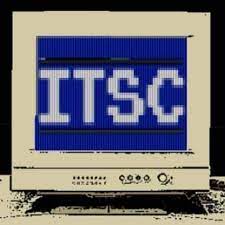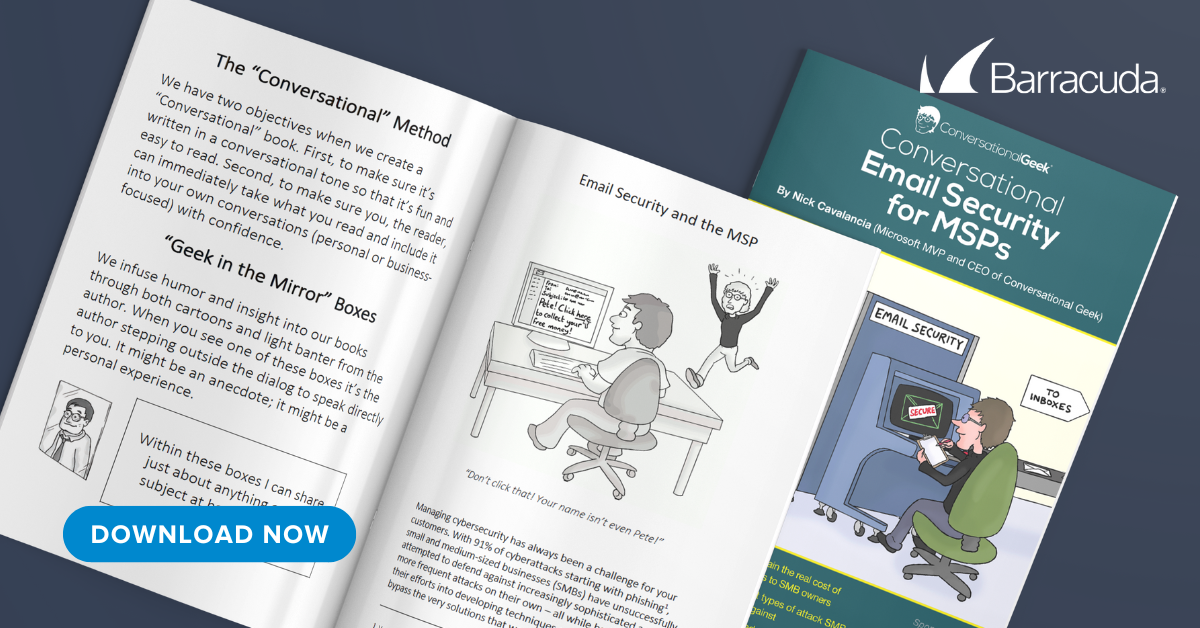
 Phishing attacks are no longer the clumsy attempts of the past. They’re evolving at an alarming rate, forcing managed service providers (MSPs) to radically adapt their email security strategies to protect their customers effectively. Automated phishing tools, the weaponization of artificial intelligence (AI), and meticulously researched and targeted attacks have dramatically increased these attacks’ effectiveness (and efficiency). This surge in sophistication has raised the bar on what constitutes robust email security measures.
Phishing attacks are no longer the clumsy attempts of the past. They’re evolving at an alarming rate, forcing managed service providers (MSPs) to radically adapt their email security strategies to protect their customers effectively. Automated phishing tools, the weaponization of artificial intelligence (AI), and meticulously researched and targeted attacks have dramatically increased these attacks’ effectiveness (and efficiency). This surge in sophistication has raised the bar on what constitutes robust email security measures.
The primary focus of phishing remains the same – to deceive users into divulging their credentials or performing a specific action (such as wiring money or granting access to sensitive data) by creating the illusion that the email originates from a trusted source or co-worker.
For MSPs, safeguarding customers against phishing is a technical and human challenge. The majority of successful phishing attempts exploit human error and fallibility. Compounding this issue is that these messages are becoming increasingly difficult to detect, significantly complicating cybersecurity efforts. As a result, the email security tools and strategies that MSPs employ to detect and prevent phishing attacks are undergoing a fundamental transformation.
Here are eight ways the evolution of phishing is reshaping MSPs’ approaches to email security.
1. AI-powered threat detection: Outsmarting the phishers
Today, MSPs can access sophisticated, AI-driven tools that leverage machine learning to detect and respond to increasingly advanced phishing attempts. These intelligent systems excel at identifying subtle anomalies and patterns that may indicate a phishing attack, even when traditional methods prove ineffective. This is crucial because AI can “learn” what normal email traffic and content look like for each customer, enabling the algorithms to pinpoint unusual activity and new, emerging types of attacks with unparalleled accuracy.
2. Fighting fire with fire: Countering AI with AI
Cybercriminals also use AI-driven tools to craft more convincing phishing emails, making them even more difficult to detect. Gone are the days of phishing emails riddled with poor spelling, awkward grammar, and outlandish premises. AI tools now eliminate these telltale signs, generating realistic text and even creating convincing images to enhance the message’s authenticity.
In response, MSPs are strategically adopting AI-powered defense mechanisms to counter these advanced threats, effectively fighting fire with fire.
3. Deepfake deception: The new frontier of phishing
The emergence of deepfake technology in phishing attacks, where AI generates realistic voice recordings or videos to impersonate real individuals, has dramatically raised the stakes for MSPs. This sophisticated development requires more advanced authentication methods and a renewed emphasis on user education.
Voice phishing (vishing) can be particularly challenging for MSPs and their customers. These attacks bypass email and traditional network channels by targeting victims via phone calls. In some cases, these attacks are combined with phone numbers and website spoofing to enhance their believability further.
Take, for instance, a recent article in MIT Sloan Management Review highlighting a case where an executive at luxury sports car manufacturer Ferrari received several messages that appeared to have been sent by CEO Benedetto Vigna on the messaging and calling platform WhatsApp. The messages received from an unfamiliar number included a profile picture of Vigna alongside the Ferrari logo, pointing to an impending acquisition and urging the executive to sign a nondisclosure agreement immediately, claiming that the Italian regulatory authorities had been informed.
Despite the convincing details and the caller’s imitation of Vigna’s accent, the executive became wary due to slight inconsistencies in the tone during a follow-up call. When he asked a specific question about a book Vigna had recently recommended, the scammer could not answer and ended the call abruptly. This is just one example of how attackers use AI to commit fraud.
4. Multi-factor authentication (MFA): The essential layer of defense
MSPs are increasingly implementing MFA across all customer systems as a critical defense against phishing. Even if login credentials are compromised, MFA provides an essential additional layer of security by requiring validation via a text message or authentication app. MFA is now a non-negotiable feature for professional email accounts and access to critical networks and applications, playing a vital role in protecting customer systems against malware and breaches.
5. Email authentication protocols: Verifying sender legitimacy
MSPs should strongly encourage customers to enable essential email authentication protocols such as Sender Policy Framework (SPF), DomainKeys Identified Mail (DKIM), and Domain-based Message Authentication Reporting and Conformance (DMARC) to verify email senders and prevent spoofing.
These protocols play an important role in reducing the risk of phishing attacks by confirming the legitimacy of email sources. These protocols authenticate email sources and verify that messages come from actual senders. It’s worth noting that Google and Yahoo now mandate that bulk senders (over 5,000 email messages per day) comply with DMARC specifically.
6. Going beyond basic filtering
MSPs are moving beyond traditional anti-spam and antivirus filters to embrace more comprehensive email security solutions. These advanced tools incorporate AI-powered threat detection, antivirus, and spam filtering capabilities designed to combat modern phishing techniques. Unlike legacy solutions that require manual management to keep pace with emerging threats, comprehensive solutions are inherently more proactive and offer superior automation. This increased automation empowers MSPs to centrally monitor and respond to threats across their entire customer base with greater efficiency and effectiveness.
7. Empowering users through training
As mentioned previously, human error remains the most significant vulnerability when it comes to phishing. While technology is critical to successfully defending against cyber threats, MSPs also must educate their customers’ employees on how to recognize and avoid phishing attempts effectively. This human-centric approach serves as a vital complement to technical defenses. Effective cybersecurity training should encompass the following:
- Recognizing phishing attempts
- Conducting regular phishing simulations to identify employees requiring further training
- Providing clear instructions on reporting protocols
- Delivering regular training updates to address emerging threats
8. Phishing-as-a-Service (PhaaS): Democratizing cybercrime
The rise of PhaaS has lowered the barrier to entry for sophisticated phishing campaigns. Novice cybercriminals can now leverage ready-made tools and services to launch highly effective attacks with minimal experience or effort. MSPs are responding by implementing more robust and flexible security measures to provide comprehensive protection against a broader spectrum of potential threats.
This post originally appeared on Smarter MSP.

